Awesome Lesson Plan Ideas and Learning Objectives for Any Grade Level
As teachers, we so often rely on our own experience each year that passes in the classroom when it comes to developing lesson plan ideas. Once 2020 hit, the entire dynamic of education and what that means for the classroom changed, and searching for a lesson plan template that made sense in terms of learning objectives and educational activities for each content area became a daily quest.
Whether teaching traditionally, hybrid, or all online, there is a method to the madness and you shouldn’t have to spend your precious time trying to find something that works. Lesson ideas and appropriate learning activities for your needs and grade level exist, and it just takes the correct mindset to not only find them but to make them work to propel engagement and student learning.
What if You Can’t Control Your Outcomes?
As I’ve been saying to all of the teachers that I have worked with over the past few years, you need to know at the end of the day you can only do what you can do. It doesn’t matter what kind of initiatives or requirements are being thrust at you, you can’t control whether or not a child is going to do their work at home or if they’re going to be preoccupied due to illness or an employment-type situation. Technology will fail, lessons will not go as planned, and other scenarios that you simply can’t make up will occur.
However, as teachers, we know that teaching is very much rolling with the punches and being able to adapt your daily lesson plan to whatever scenario happens in your classroom. We could all sit down and write a book about the crazy things that have happened to completely derail our classroom on any given day.
The upheaval of all that we knew in education in 2020 was no different, but teachers were becoming more flustered because they were not used to it. So much much time was spent (and frankly, is still being spent) on trying to recreate the wheel when truly, taking your best resources and just utilizing different applications through small tweaks to what we already know will lead to that educational achievement you are searching for.
It’s like when you were a first-year teacher in your first few weeks of school, and something went wrong. If you haven’t gone through that scenario before and you don’t have something in your toolbox to combat it, sometimes it’s more difficult to fix it on the fly.

To combat all of this, you need to set expectations appropriately. Some stakeholders may be expecting too much and others too little, but you need to regularly separate yourself from the situation to take inventory of what classroom activities are working and what are not.
If something is not working, you need to try to figure out why. Is it not keeping students’ attention? Is there a lack of student understanding? Were these useful resources in the past, but now miss the mark with a newer generation of students?
The reasons may, in fact, be out of your control.
The best you can do is document, document, document, and then move forward. Perhaps you’ll come up with an idea at 3 in the morning that can help counteract the issue. Maybe nothing will ever transpire. Either way, document the issue and move forward with the circumstances that you can control.
Don’t let it discourage you. The right answer is out there, it might just be shown in different ways than you are used to (or even considering).
Shifting Your Mindset
You need to remember that we are dealing with a very different situation right now in education. I mentioned in another article during the pandemic that a lot of this is about mindset and a simple shift that can find the silver lining in all of this. We are learning about tools and methods of reaching our students that we may never have been open to while things were “pre-March 2020”. We are finding new ways to create boundaries to help with a work-life balance that many of us ignored before (and if you’re ignoring now, you need to keep from martyring yourself, or else you are going to find yourself burning out quickly).
While it might seem daunting to search for the correct answer here, when you find a great way to hook your students, your instructor’s road map will show areas you have never before considered. A general outline of your teaching goals might shift and the lesson plan examples that you come up with will be pure perfection for the students sitting in front of you today.
Teachers are especially susceptible to burnout in this situation when they are not given the proper tools to achieve this successfully. We are taking the normal pressures of being in the classroom and combining them with a post-pandemic world where everyone is exhausted, frustrated, and apathetic (or really passionate). So often, we are already the guiding light for our students and now we’re trying to help them through something none of us have seen in our lifetimes while also finding our own way. This is the recipe for burning out before the school year is even over.

A 2003 study published in the Social Psychology of Education international journal took, “a sample of 246 teachers (who) responded to scales that assess seven school environment and seven classroom environment dimensions and the three facets of burnout measured by the Maslach Burnout Inventory: emotional exhaustion, depersonalization, and personal accomplishment.” They found that all of these, but especially emotional exhaustion, heavily influenced the rate of teacher burnout.
I’ve said it before, and I’ll say it again: you simply cannot pour from an empty cup.
…and this is from 20+ years ago. Think about how exacerbated this number would be today.
Creating the Perfect Lesson Plan Template
In lesson planning and thinking about both students’ needs and a successful organization of class time, you need to consider yourself first. I know this is out of the ordinary for most teachers, but it is essential if you want to keep helping your students in the best way possible. You need to set boundaries and stick to them. You need time to “turn it off” every day and then stick to it. Determine how much time you need, and when you want it, and then don’t allow anyone to break that. Also remember, you don’t owe anyone an extended explanation about this.
Then, you need to determine what your students will need, and to do this, you need to know what you’re working with.
It’s great that your school is tech-driven, but when you have some students who aren’t participating, try to find out why. Again, it may be completely out of your control. In this case document and just try to consistently reach out to the student, making certain they know that you care about them. For these kids, having a relationship they know they have may be all you can do for them.

Maybe there is a communication breakdown. It’s hard sometimes, but we need to remember that sometimes, something that seems obvious to us means nothing to someone else. If there is a language barrier with parents, you could use the TalkingPoints app to help communicate. There is always a “Plan B” option if all parties are willing to give it a shot. Could it end up having the same results? Quite possibly. But again, you can only control what you can control. Do what you can and don’t beat yourself up for what you can’t.
Once you know what you’re working with and where the issue lie, come up with a variety of methods of instruction to implement in that lesson plan idea.
If you’re doing the same activities day in and day out, the students are going to become less engaged in the material and less likely to complete them. They need structure, but also excitement. I don’t necessarily mean “bells and whistles” excitement. Don’t try to plan a dog and pony show for each day when looking at a productive lesson.
Think of real-life examples, personal experiences, and even famous people. There are so many options for the various subjects we teach: don’t be afraid to think outside the box to create good lesson plans. Keeping your students intrigued about what you have planned next for them might just be enough of a hook to keep them working hard and showing up.
By showing up, I mean in all ways. I mean this for you, too. Obviously, you would be there in person, but are you there completely emotionally? Again, if you’re finding yourself going through the motions, make certain you peek at the articles I linked above. This is a time for self-care for everyone and creating a situation for yourself that will lead right to teacher burnout is not beneficial to anyone.
The Key? Communication.
To set this up, you need to make sure you’re consistent. Students (and parents) want to know where they can go for the information they need. If you’re going to put your weekly lesson plan template on a Google Slideshow that they are emailed, they need to know where they can go each week to find it. If you’re going to post a more traditional schedule, make sure they know where they can access it. If you’re playing it day by day, be certain the day begins in the same location each time.
A successful lesson plan addresses this.
You need to be certain there is a way to communicate back and forth. This could be via email, a Google Voice number or Voxer, virtual meetings via Zoom or Google Meet, or a chat program like Remind or Microsoft Teams. You can also use programs like YoTeach or discussion boards on Google Classroom or Edmodo to have real-time conversations that can be accessed at any time (Remember, have those boundaries set or else everyone is going to assume you are available 24/7, which is not beneficial to your mental health).

In addition to your boundaries, also respect those of the families. Too many parents are complaining about multiple messages from multiple teachers each day. Just because we understand all the educational lingo and programs doesn’t mean that they do. Multiple messages should only be in case of an emergency. Everyone is overwhelmed, to begin with, let’s make sure we’re not contributing to that.
It is important to keep social interaction between both the students with each other and you. You can spend some time just talking to each other without an “instructional” agenda. Have an opportunity for contests like “Dad Joke of the Day” to lighten the mood.
Remember, at the end of the day we need to make ourselves priority one, our students’ well-being priority two, and engaging lesson plan template ideas to keep them “coming back for more” number three. If we can remember that order and keep plugging away during all the uncertainty, we will make it through to the other side and will be able to gracefully transfer into the new normal.
Lesson Plan Examples
Entirely too often, teachers are afraid to think outside of the box and foster new ideas in instruction because it is overwhelming. As soon as the overwhelm hits, it’s just as easy to drop back to what’s tried and true, right?
It doesn’t have to be that way.
When I used to tell people that, as a social studies teacher, I used zero PowerPoint presentations or whole-class lectures to teach my students, they usually would stare back at me dumbfounded. Most teachers in their educational journeys were taught (myself included) that direct instruction is necessary in one form or another for a student to be able to understand the content at hand.
That simply is not the case.
Student-centered instruction teaches the students more than anyone can babble on to them about when done correctly and the correct lesson plan template examples are implemented.
Student-Centered instruction is so much more than handing your students a worksheet and telling them to read the directions. I’ll be honest: when I first started this model, that’s what I thought it meant. If I wasn’t actively teaching them, then it was student-led, right? Wrong.

Student-led learning is involving the students actively in their education. While at first there is some pushback from the students (after all, they cannot sit back on a lazy day and let you tell them what they need to know), they begin to realize that they are learning in-depth when they are completing their assignments and are actually having fun doing so.
The biggest complaint (concern?) I get from teachers when I talk about this method is the time that they think it takes to create a completely student-centered lesson. There are two things to remember on this front:
- Once you create a student-led assignment, you have it forever. Even though it might take a fair amount of time to create one lesson, it is ready to go for years to come with only the need to tweak slightly for the group of students you are teaching at that time. (Don’t forget: it usually takes a while to make a really stellar PowerPoint or Prezi the first time, too! If you have some that you love, make sure you look at Nearpod as an option for execution).
- What is the cardinal rule we all learned (or should have learned) when we began our teaching journeys? DON’T REINVENT THE WHEEL! No matter what your topic or the content you’re trying to teach, you can find someone who has created some type of activity that you can amend to fit your student’s needs. Google is your friend in finding fantastic lesson-planning examples.
There are a number of searches you can perform to find appropriate lesson-planning examples. Sometimes you might have to go through a few of them before you find something that works, or maybe you’ll end up with a combination of a few to create the lesson you are envisioning. Generally, I will use: topic activity, topic student-centered, topic inquiry-based, or topic project. Then, depending on what I find, I will alter from there. If you can find a direct simulation of what you are trying to teach, you are absolutely set. Here’s an example:
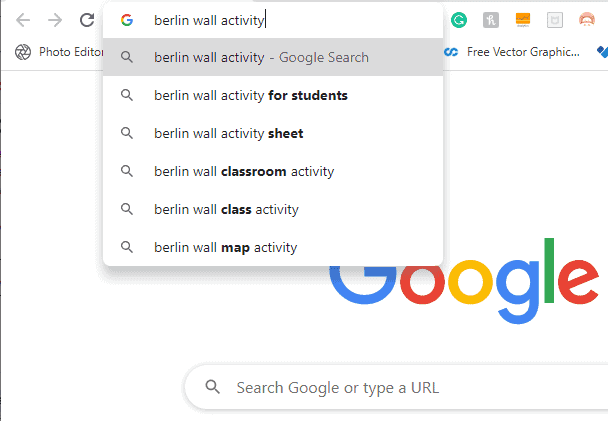
Google is great in that it has an algorithm that tries to predict not only what it is that you are looking for, but also tries to put up the best possible options for that guess.
However, the Catch-22 with Google is that the algorithm changes. What it thinks you are looking for sometimes changes for a variety of factors (most of which Google never actually lets you know).
For instance, the activity below used to pop up as the number one example when you would search “Berlin Wall Activity” when looking for lesson plan template ideas:
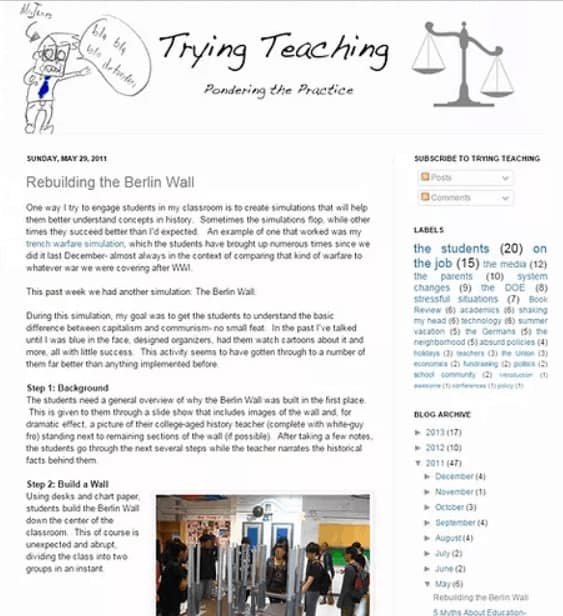
I’ve done this particular activity multiple times and it is amazing.
This activity does a GREAT job of explaining the Berlin Wall over the course of its lifetime (a little historical background if you’re interested). After constructing the mock wall in the classroom, those in the “West” (Capitalists) are encouraged to “mark up” the wall with graffiti and have a great time while over there, while those in the “East” (Communists) are required to sit and write silently about the experience, which many find to be boring and, of course, quickly become jealous of the party going on in the West.
My favorite moment of this is when I recreate the Berlin Airlift. For the “West”, I would throw lollipops over the wall. They would each try to get as many as they could, but some students grabbed up to 3 while others did not get any.
On the “East”, each student received a lollipop, but in an unpopular flavor. Those students in the West complained that it wasn’t fair that everyone in the East received a lollipop, but those in the East said that they were happy that they all received one, even if it was not an ideal flavor.
This is ALWAYS the moment when someone exclaims, “Oh! that’s the difference between Capitalism and Communism!”
Knowledge is power.
This activity is exactly what I was looking for when I sent out on my trek for lesson planning examples regarding the Berlin Wall. However, the website that explains it all is no longer to be found on Google.
Now granted, the website could have been taken down or it was simply lost in the algorithm. The point is, if you find a great activity, make sure you take note of it because, at any time, it could vanish from your grips forever.
Don’t be afraid to just search around to see what you can find when solidifying a lesson plan template. An active student will ALWAYS retain more information than a passive one. Remember, we’re looking for mastery in our students. Coming up with hands-on activities is the absolute best way to do this.
Stop Driving the Teacher Struggle Bus
Are you struggling with student engagement, apathy, or keeping your class on track?
💫💫 There’s hope! 💫💫
Join my free teacher workshop “Choosing Choice” and in just 60 minutes, you’ll craft a practical plan to revitalize your teaching. Discover the magic of student choice in boosting engagement, gain quick implementation ideas, and explore strategies for year-long success.
Unlike overwhelming workshops, my approach guides you in real-time, providing more classroom options, reducing stress, and giving you more personal time.
Plus, you’ll earn a 1-hour professional development certificate and have 7 days of access.
Don’t miss this chance to transform your teaching; click below to secure your spot now!
This article was originally published on April 10, 2020
References:
Dorman, J.P. Relationship Between School and Classroom Environment and Teacher Burnout: A LISREL Analysis. Social Psychology of Education 6, 107–127 (2003). https://doi.org/10.1023/A:1023296126723

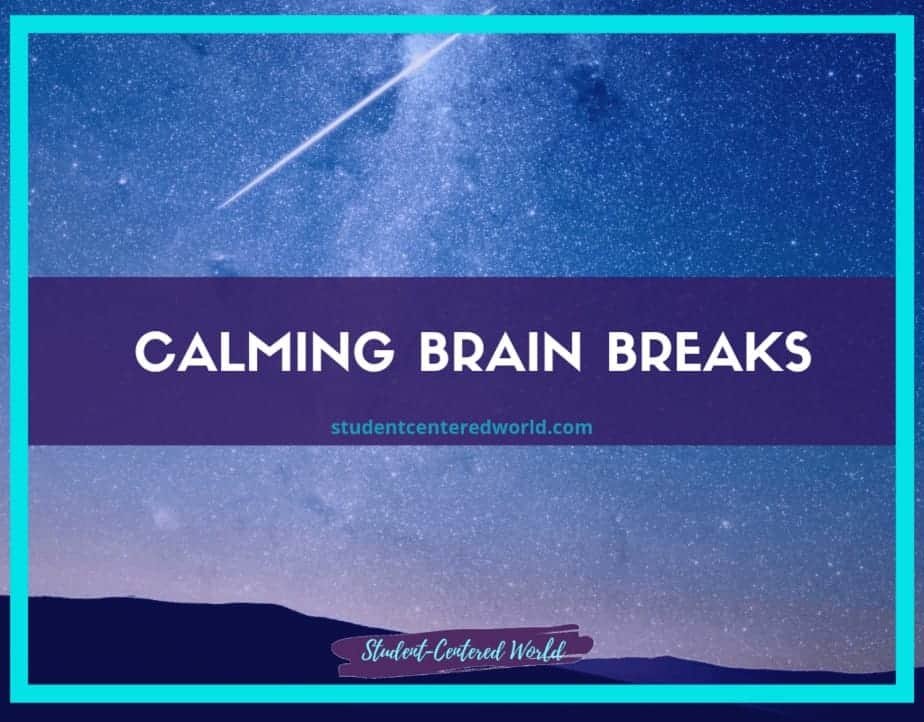

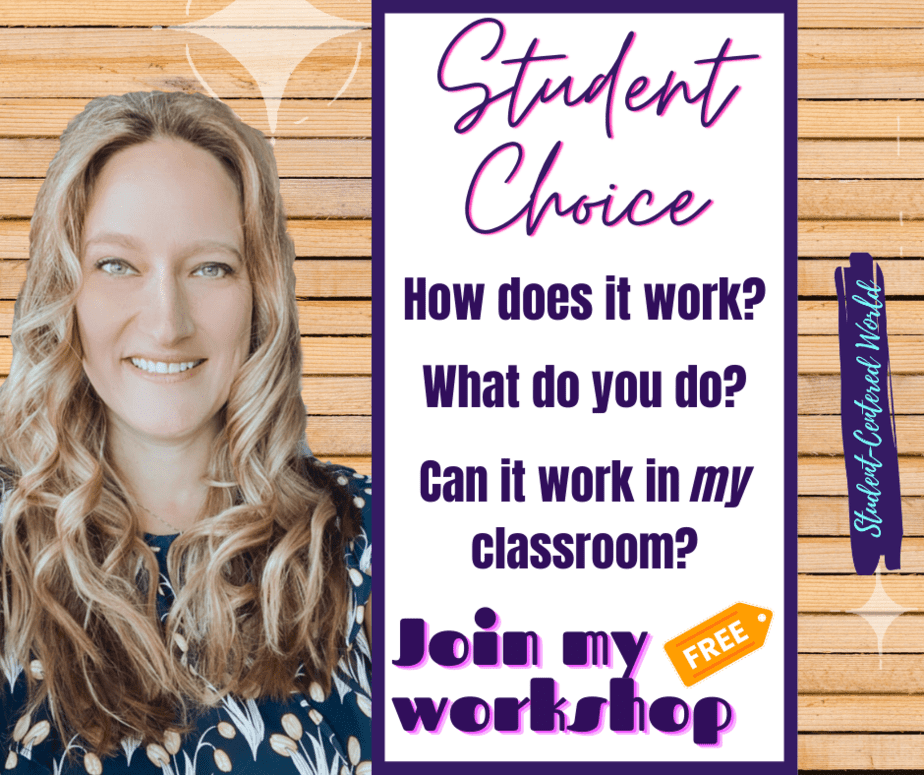
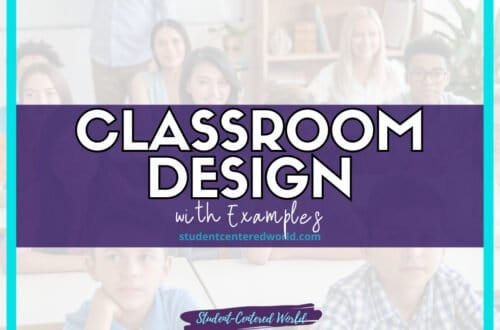
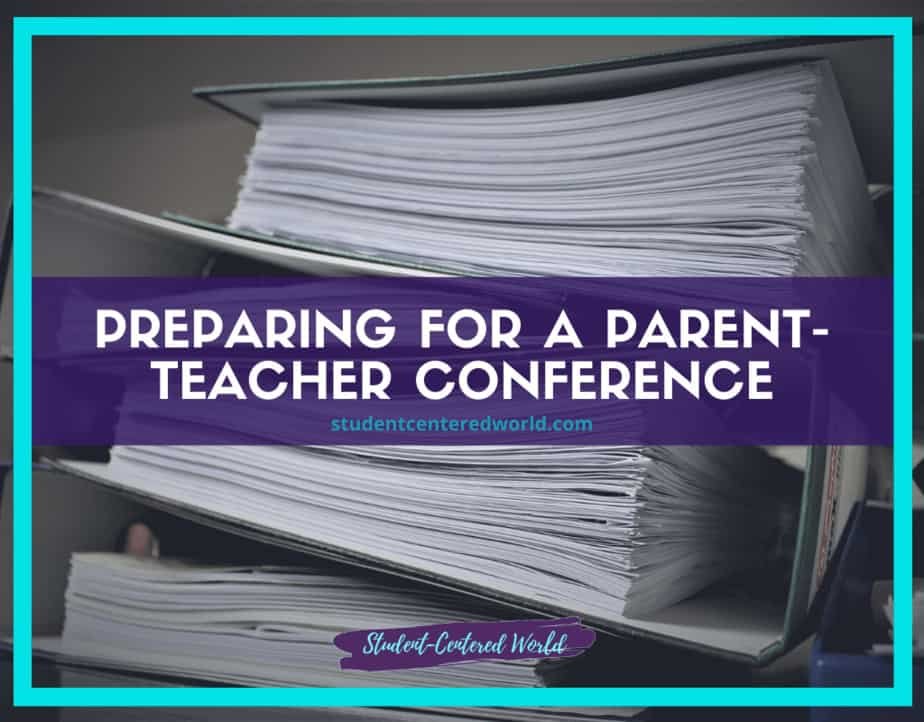

6 Comments
lizzy rmz
i’d like to have them.
Jenn
Hi Lizzy! Feel free to sign up above where it asks for your name and email. The presentation will be sent to you automatically 🙂 Take care!
Yevette Francis
Wonderful. Thanks for the help.
Jenn
Thank you, Yevette! If there is anything else I can help you with, please don’t hesitate to ask.
Dulce Crespo
any lesson plans for adults that are typical community based but now need to get virtual services
Jenn
Hi Dulce! We focus more on K-12 instruction, but I would be interested to hear some of your thoughts on exactly what type of materials you were thinking of.